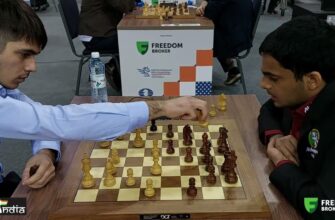The game of cricket, at its purest, is a contest of skill and strategy. Yet, when India faces Pakistan, the 22 yards transform into something far grander – a microcosm of historical tensions, national pride, and a perpetual debate on where the boundaries of sportsmanship truly lie. The recent Asia Cup encounters offered yet another dramatic chapter in this ongoing narrative, prompting calls for calm amidst a flurry of on-field provocations and official complaints.
The Enduring Appeal of the `Spirit of the Game`
In the wake of what many perceived as a less-than-harmonious interaction between the two cricketing powerhouses, Indian MP Shashi Tharoor emerged as a prominent voice, advocating for the sanctity of the “spirit of the game.” His argument was simple yet profound: once a decision is made to play, the game itself should transcend political and military conflicts. He recalled the 1999 World Cup, where Indian and Pakistani cricketers shook hands even as the Kargil War raged on, a poignant reminder that the sporting arena could, at times, offer an olive branch, however fragile. Tharoor`s stance underscored a yearning for a purer form of competition, where mutual respect, or at least a professional detachment, prevails.
When Diplomacy Fails: The On-Field Manifestations
Unfortunately, the recent Asia Cup seemed to suggest that Tharoor`s ideal remains, for now, largely aspirational. Reports indicated a reluctance among Indian players to engage in the traditional post-match handshakes, a subtle but unmistakable gesture of froideur. But the temperature escalated with more overt actions from the Pakistani side.
- Pakistani opener Sahibzada Farhan`s half-century celebration, miming a gun with his bat, drew swift criticism for its provocative nature.
- Pacer Haris Rauf found himself at the center of multiple controversies. After a wicket, his aggressive demeanor was noted. More significantly, his “0-6” gesture towards Indian spectators near the boundary rope – a purported reference to alleged downed jets – was seen as a direct injection of geopolitical rhetoric onto the sporting field. The irony was not lost on Indian fans, who responded by chanting “Virat Kohli,” recalling the legendary batter`s unforgettable sixes off Rauf in a previous encounter, deemed by the ICC as the `Shot of the Century.` It was a moment where the crowd, with a simple chant, turned a military taunt into a sporting humiliation.
These incidents weren`t merely fleeting moments of youthful exuberance; they sparked official reactions. The Board of Control for Cricket in India (BCCI) wasted no time in lodging a formal complaint with the International Cricket Council (ICC) and match referee Andy Pycroft, demanding action against Farhan and Rauf for conduct deemed beyond acceptable on-field behavior. Such complaints, while necessary for maintaining decorum, highlight the persistent challenge of separating the sportsman from the patriot.
The Unseen Scorecard: Beyond Runs and Wickets
The rivalry between India and Pakistan in cricket is unique because it carries the weight of history and expectation far beyond the typical sporting contest. Every ball bowled, every run scored, and indeed, every gesture made, is magnified under an intense geopolitical lens. When players engage in gestures that blur the lines between sport and state, they not only risk sanctions but also contribute to an atmosphere where mutual respect becomes an increasingly scarce commodity.
Tharoor aptly observed that if the initial perceived insult led to a reciprocal one, “it shows that the spirit of the game is lacking on both sides.” This candid assessment cuts to the core of the issue: the responsibility for upholding sportsmanship lies not just with one team, but with all participants, from the players and officials to the very fans who passionately follow every twist and turn.
A Contemplation for the Future
As India and Pakistan potentially faced each other again in the Asia Cup final, the question lingered: can this rivalry ever truly return to a state where the `spirit of the game` reigns supreme? Or is it destined to forever serve as a proxy for deeper national narratives? While the thrill of the contest is undeniable, the recent events serve as a stark reminder that the pursuit of victory, when untempered by respect, can diminish the very essence of what makes sport so compelling. Perhaps, as Tharoor suggested, a conscious effort to compartmentalize is required – to shake hands, to compete fiercely, and then to leave the weight of history at the boundary rope. An idealistic notion, perhaps, but one worth aspiring to, lest the beautiful game be perpetually overshadowed by the shadow of geopolitics.








